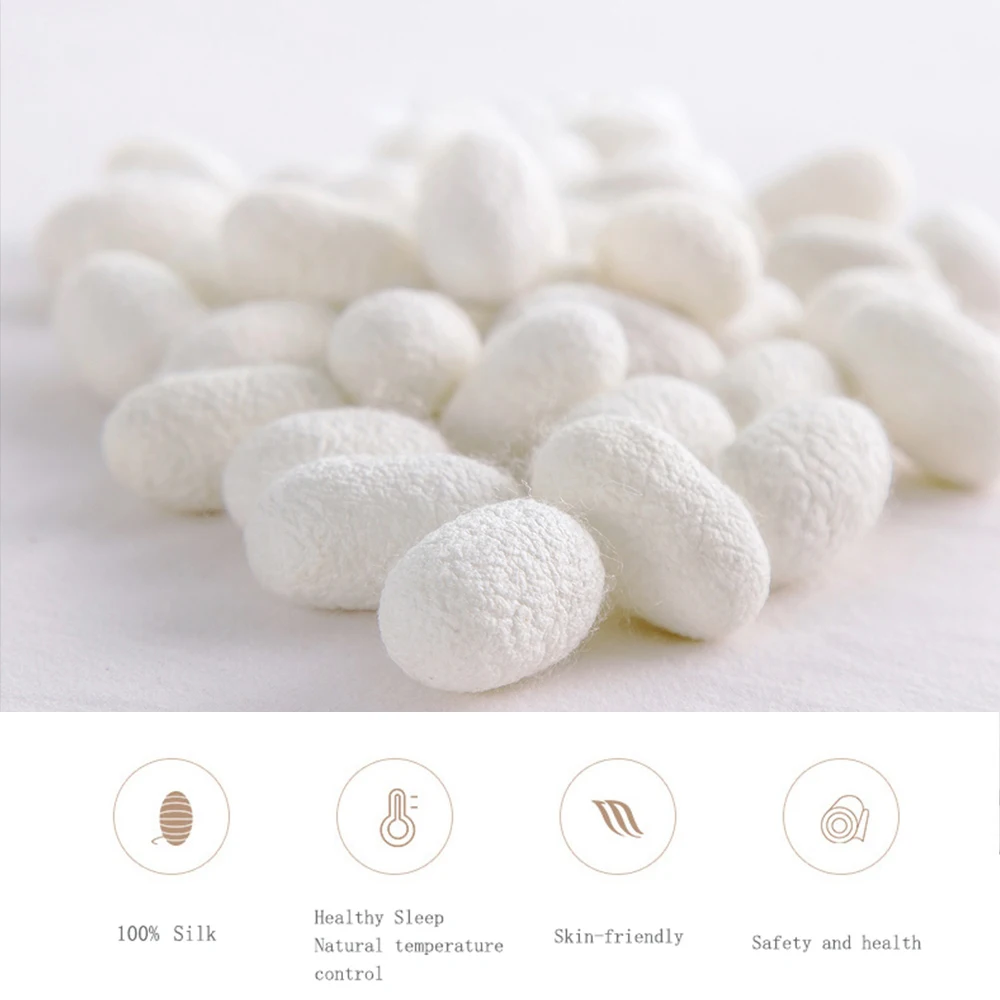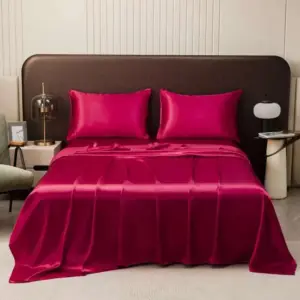Yes, Silk Is Excellent for Allergy Sufferers
Silk stands out as one of the best natural materials for people suffering from allergies. This luxurious fabric offers remarkable relief thanks to its inherent hypoallergenic qualities that work to minimize allergic reactions and discomfort.
The unique structure of silk makes it naturally resistant to many common allergens that trigger symptoms. Unlike many other fabrics, silk’s smooth fibers create an environment that’s inhospitable to dust mites, mold, and other allergy-causing substances.
For allergy sufferers, silk provides multiple benefits:
– Natural resistance to dust mites, a primary trigger for indoor allergies
– Inherent antimicrobial properties that reduce bacteria and fungi
– Smooth surface that minimizes irritation for sensitive skin
– Breathable structure that prevents moisture buildup and mold growth
Understanding the hypoallergenic properties of silk fabric can make a significant difference in managing allergy symptoms and improving overall comfort. The natural composition of silk creates a protective barrier between your body and potential allergens, making it an excellent choice for bedding and clothing.
The science behind silk’s hypoallergenic nature is fascinating and explains why this ancient fabric continues to be valued for its health benefits today.
What Makes Silk Hypoallergenic? The Science Behind It
To understand why silk works so well for allergy sufferers, we need to look at its unique structure and composition. The hypoallergenic qualities of silk aren’t just marketing claims—they’re based on scientific facts about the fabric’s natural properties.
Natural Protein Structure: Sericin and Fibroin
Silk is primarily composed of two proteins: sericin and fibroin. These proteins create a natural barrier that repels many common allergens.
Fibroin forms the core structure of silk fibers, creating the smooth, strong threads we associate with silk fabric. This protein has a tight molecular structure that doesn’t easily trap allergens or provide spaces for them to hide.
Sericin, often called “silk glue,” naturally coats the fibroin fibers. This protein contains antimicrobial and antifungal properties that actively repel dust mites and prevent the growth of other allergens. While some silk processing removes sericin, high-quality silk fabric maintains what makes it hypoallergenic through careful manufacturing techniques.
Unlike synthetic materials that can release volatile organic compounds (VOCs) or natural fibers like cotton that easily trap allergens, silk’s protein structure creates an environment that’s naturally inhospitable to common irritants.
Tightly Woven Fibers
Another key factor in silk’s hypoallergenic nature is its incredibly tight weave. Silk fibers create a densely woven surface that functions as a physical barrier against allergens.
The microscopic structure of silk fabric features smooth, tightly packed fibers that leave minimal space between threads. This density makes it extremely difficult for dust mites, pet dander, and other allergen particles to penetrate and become trapped within the material.
When compared to cotton, which has a more open weave with spaces that can trap allergens, silk’s tight structure provides superior protection. This physical barrier effect works alongside silk’s natural protein properties to create a double defense against common allergic triggers.
Absence of Irritating Chemicals
Many people with allergies react not just to natural allergens but also to the chemicals used in fabric production. Silk stands apart because it requires fewer chemical treatments during processing compared to many synthetic fabrics.
Natural silk production involves unwinding the cocoon fibers and weaving them into fabric—a process that requires minimal chemical intervention compared to the creation of synthetic materials like polyester or nylon. This results in fewer potential chemical irritants in the final product.
It’s worth noting that dyed silk may contain additional chemicals, so those with extreme chemical sensitivities might prefer undyed or naturally dyed silk products. However, even processed silk typically contains fewer irritating chemicals than many synthetic alternatives.
Breathability and Moisture-Wicking Properties
Silk’s natural ability to manage moisture plays a significant role in its allergy-fighting capabilities. The fabric is highly breathable while simultaneously wicking away moisture from the body.
This moisture management is crucial because many allergens, particularly dust mites, mold, and mildew, thrive in damp environments. By keeping the sleeping environment drier, silk hypoallergenic features in silk sheets naturally create conditions that discourage allergen growth.
Additionally, silk efficiently regulates temperature, preventing the overheating and sweating that can create ideal conditions for allergens to multiply. This temperature-regulating quality helps maintain a dry, comfortable sleep environment that’s less hospitable to common allergy triggers.
How Silk Repels Specific Allergens
Beyond its general hypoallergenic properties, silk shows remarkable effectiveness against specific allergens that commonly trigger allergic reactions. Understanding how silk addresses each type of allergen helps explain why it’s so beneficial for silk bedding for allergy sufferers.
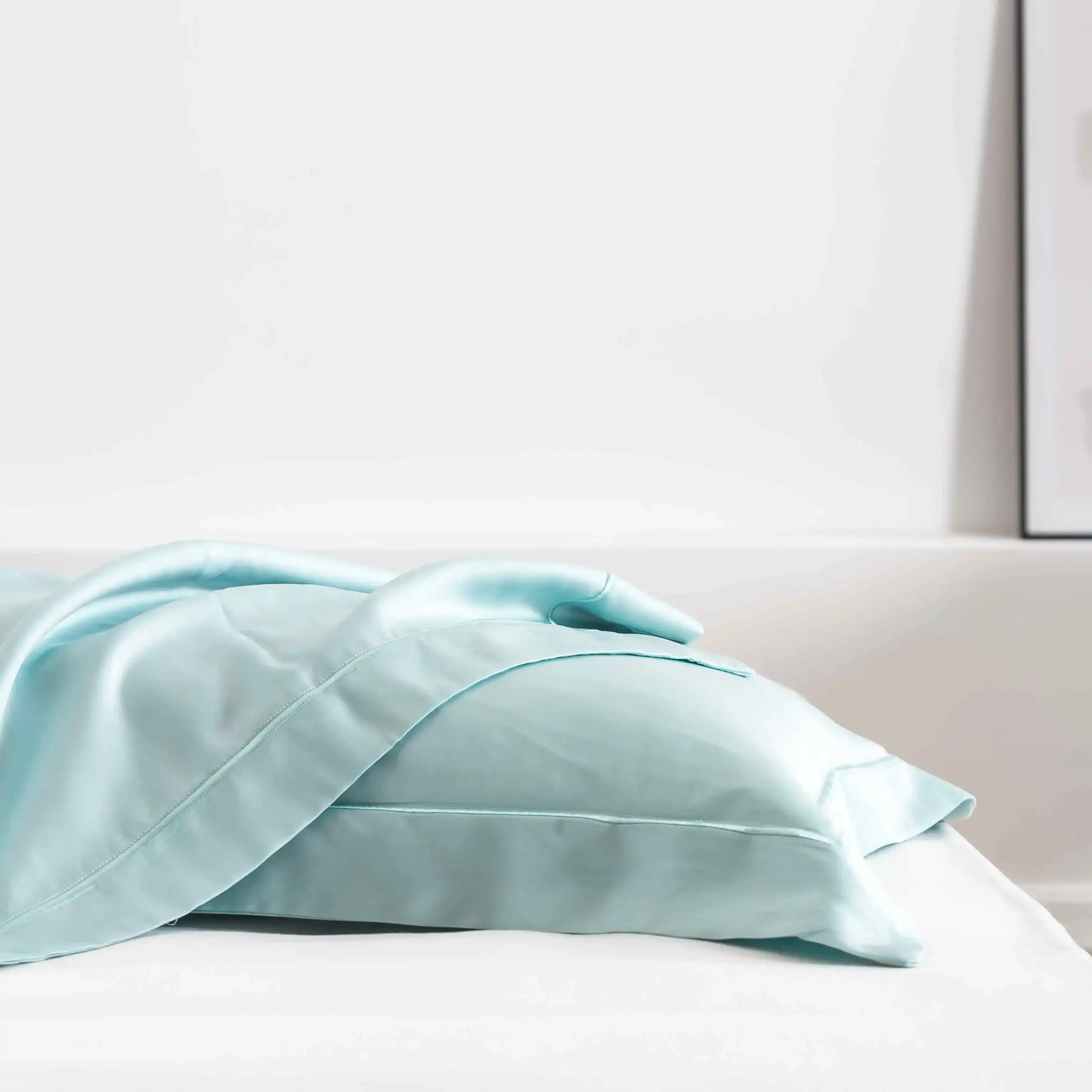
Dust Mites
Dust mites are microscopic creatures that feed on dead skin cells and are one of the most common indoor allergens. They’re particularly problematic in bedding, where they can trigger asthma attacks, sneezing, and other allergic reactions.
Silk naturally repels dust mites for several reasons:
– The protein sericin in silk has natural properties that make the environment inhospitable to dust mites
– Silk’s smooth surface doesn’t easily collect the dead skin cells that dust mites feed on
– The tight weave of silk fibers creates a physical barrier that prevents dust mites from penetrating the fabric
Research suggests that silk bedding can contain significantly fewer dust mites compared to cotton alternatives. While cotton can harbor thousands of dust mites per square inch, silk’s natural properties make it much less hospitable to these allergen-producing creatures.
Mold and Mildew
Mold and mildew allergies affect many people, causing respiratory issues and other uncomfortable symptoms. These fungi thrive in damp environments, which is why moisture control is crucial for allergy management.
Silk excels at preventing mold and mildew growth because:
– It efficiently wicks moisture away from the body and releases it into the air
– The quick-drying properties of silk prevent the prolonged dampness that fungi need to grow
– Silk maintains better airflow around the sleeping surface, reducing humidity levels
These moisture management properties create a drier environment that naturally discourages mold and mildew growth. For people with these allergies, silk bedding can significantly reduce exposure to these common allergens.
Bacteria and Fungi
Beyond mold and mildew, various bacteria and fungi can trigger allergic reactions or exacerbate existing skin and respiratory conditions. Silk’s natural antimicrobial properties help combat these microorganisms.
The sericin protein in silk has been shown to inhibit the growth of various bacteria and fungi. This natural antimicrobial effect helps maintain a cleaner sleep environment with fewer potential allergens and irritants.
Additionally, the smooth surface of silk doesn’t provide the texture and moisture that many microorganisms need to thrive, further reducing their presence compared to rougher, more absorbent fabrics like cotton.
Pet Dander
For animal lovers with allergies, pet dander presents a particular challenge. These tiny particles of skin shed by animals can trigger significant allergic reactions and are notoriously difficult to eliminate from the home environment.
Silk helps manage pet dander exposure in several ways:
– The smooth surface of silk doesn’t easily trap dander particles like fabrics with rougher textures
– Silk’s tight weave prevents dander from penetrating deep into the fabric
– Dander that does land on silk can be more easily removed with proper cleaning
While no fabric can completely eliminate pet dander exposure, silk’s properties make it a better choice for allergy sufferers who share their homes with furry companions.
Benefits of Silk for Allergy-Related Conditions
Beyond preventing allergen exposure, silk offers specific benefits for people with various allergy-related conditions. Its gentle, natural properties can provide relief for those suffering from both skin and respiratory issues.
Sensitive Skin and Skin Conditions
People with sensitive skin or specific skin conditions often find significant relief when switching to silk. The fabric’s smooth texture and natural properties make it good for sensitive skin in several ways:
- Reduced friction: Silk’s incredibly smooth surface creates minimal friction against the skin, reducing irritation and preventing the “sleep creases” common with rougher fabrics
- Moisture balance: Silk helps maintain optimal skin hydration without causing excessive dryness or oiliness
- Natural cooling: The temperature-regulating properties prevent overheating that can trigger skin flare-ups
For specific skin conditions, silk offers targeted benefits:
– Eczema: Reduces scratching and irritation that can worsen flare-ups
– Psoriasis: Minimizes friction that can aggravate plaques and scales
– Contact dermatitis: Lacks many of the chemical irritants found in synthetic fabrics
The natural silk properties for sensitive skin make it an excellent choice for anyone with these conditions. Many dermatologists now recommend silk pillowcases and bedding to patients with chronic skin issues.
Respiratory Issues
Respiratory allergies can significantly impact sleep quality and overall health. Silk bedding can help alleviate these issues by creating a cleaner breathing environment.
By reducing exposure to dust mites, mold, and other airborne allergens, silk bedding helps minimize nighttime triggers for:
– Allergic rhinitis (hay fever)
– Asthma
– Sinus congestion
– Nighttime coughing
Many users report improved sleep quality and reduced morning symptoms when using silk bedding. The reduction in allergen exposure throughout the night allows for more restful sleep with fewer interruptions from allergic reactions.
Silk vs. Other Common Fabrics for Allergies
When choosing bedding for allergy management, it’s helpful to understand how silk compares to other common fabric options. While other natural hypoallergenic fabrics exist, silk offers unique advantages.
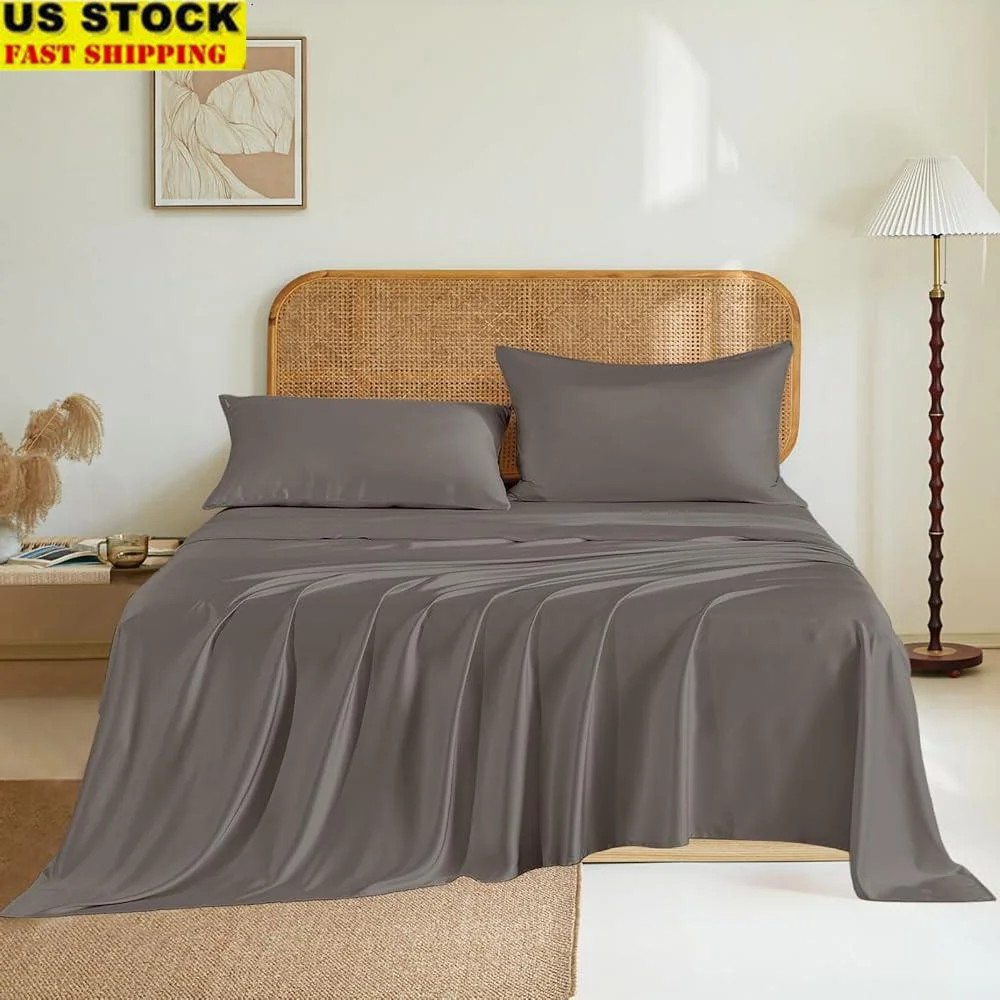
| Fabric | Hypoallergenic Properties | Allergen Resistance | Breathability | Chemical Exposure | Overall Allergy Rating |
|---|---|---|---|---|---|
| Silk | Excellent – naturally repels allergens | High – tight weave prevents allergen penetration | Excellent – wicks moisture while maintaining airflow | Low – minimal processing required | Superior |
| Cotton | Moderate – natural but traps allergens | Low – easily harbors dust mites | Good – breathable but retains moisture longer | Moderate – requires various treatments | Average |
| Synthetics | Poor – can release VOCs | Moderate – some resist penetration but attract static | Poor – often trap heat and moisture | High – chemical-based production | Poor to Average |
| Wool | Moderate – naturally antimicrobial but can trigger reactions | Moderate – resists dust mites but can trap others | Excellent – highly breathable and moisture-wicking | Low to Moderate – depends on processing | Good for some, poor for others |
| Linen | Good – natural fibers with fewer irritants | Moderate – more open weave than silk | Excellent – highly breathable | Low – minimal processing required | Good |
While cotton is often marketed as a natural, breathable option, its fibers easily trap allergens and provide an ideal environment for dust mites. Synthetic fabrics can repel some allergens but often contain chemicals that trigger reactions and typically don’t breathe as well as natural options.
Wool offers excellent moisture-wicking but is itself a common allergen for many people. Linen provides good breathability but has a rougher texture that can irritate sensitive skin and a more open weave that allows more allergen penetration than silk.
Silk consistently outperforms these alternatives across multiple factors important for allergy management, making it the premier choice for those seeking relief from allergic reactions.
Practical Applications for Allergy Sufferers
For those looking to incorporate silk into their allergy management strategy, certain products offer more significant benefits than others. Focusing on items that create barriers between you and common allergens will provide the most relief.
The most beneficial silk products for allergy sufferers include:
- Silk pillowcases: Since we spend approximately a third of our lives with our faces in direct contact with pillows, silk pillowcases provide crucial protection for both respiratory and skin allergies
- Silk sheets: Creating a complete barrier between your body and your mattress (which can harbor millions of dust mites) significantly reduces allergen exposure during sleep
- Silk duvet covers: These encase potentially allergenic filling materials, preventing them from triggering reactions
- Silk sleepwear: For those with skin allergies, silk pajamas provide extended contact with hypoallergenic material
Many allergy specialists recommend starting with a silk pillowcase if you’re new to silk products, as this provides significant benefits at a lower investment point. From there, gradually replacing other bedding with silk versions can create a more comprehensive hypoallergenic bedding environment.
Full-size Silk Sheets, King Size Silk Sheets, Queen Size Silk Sheets, Twin Size Silk Sheets, Washable Silk Sheets
Price range: $95.95 through $178.37 Select options This product has multiple variants. The options may be chosen on the product page100% Silk Sheets, Green Silk Sheets, King Size Silk Bedding Set, Mulberry Silk Bedding Sets, Queen Size Silk Bedding Set
Price range: $1,246.21 through $1,615.22 Select options This product has multiple variants. The options may be chosen on the product pagePink Silk Sheets, Twin Size Silk Sheets
$171.80 Select options This product has multiple variants. The options may be chosen on the product pageFull-size Silk Sheets, Pink Silk Sheets
$136.31 Select options This product has multiple variants. The options may be chosen on the product pageGrey Silk Sheets, Silk Sheet and Pillowcase Set
Price range: $88.20 through $146.64 Select options This product has multiple variants. The options may be chosen on the product pageBamboo Silk Sheets, Cooling Silk Sheets
Price range: $130.76 through $177.80 Select options This product has multiple variants. The options may be chosen on the product page
Our mulberry silk bedding sets provide complete protection against common allergens while delivering luxurious comfort.
Maintaining Silk’s Hypoallergenic Qualities
To preserve silk’s allergy-fighting properties, proper care and maintenance are essential. Following specific guidelines will ensure your silk products remain effective against allergens.
Key maintenance practices include:
- Washing regularly but gently: Clean silk items every 1-2 weeks to remove accumulated allergens, using cool water and mild detergent specifically formulated for silk
- Avoiding harsh chemicals: Never use bleach or regular laundry detergent, which can damage silk’s natural proteins and reduce its hypoallergenic properties
- Proper drying: Air dry away from direct sunlight, as UV rays can degrade the natural proteins in silk
- Storage considerations: Store silk in breathable cotton bags rather than plastic, which can trap moisture
It’s also important to avoid fabric softeners, which leave residues that can attract dust and reduce silk’s natural moisture-wicking properties. With proper care, high-quality 100% silk sheets will maintain their hypoallergenic qualities for years, making them a worthwhile investment for allergy sufferers.
Is Silk Worth the Investment for Allergy Relief?
When considering silk for allergy management, many people question whether the higher price point justifies the benefits. Understanding the value proposition helps make an informed decision.
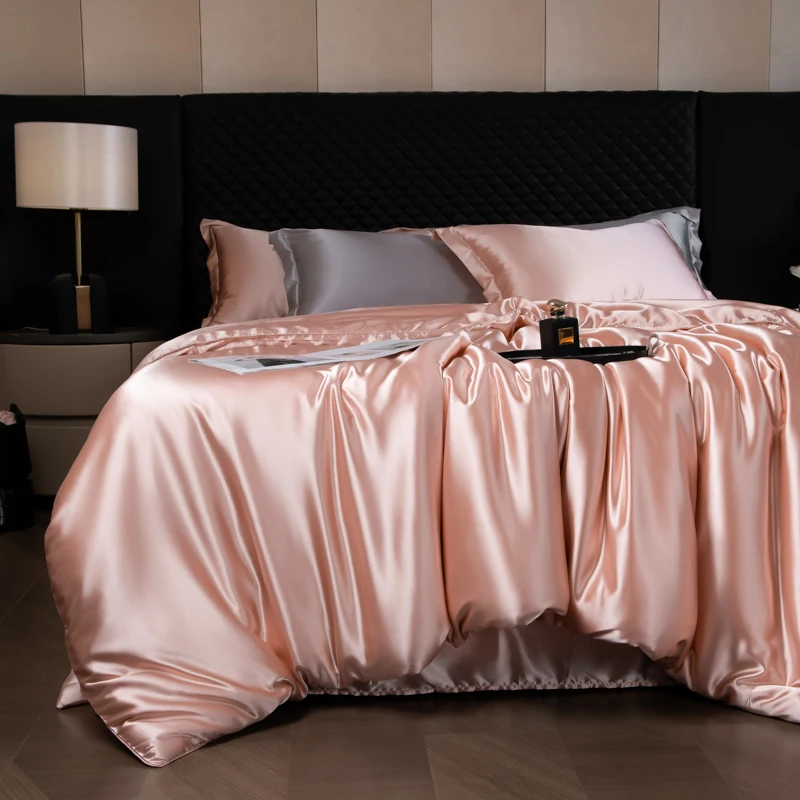
The initial investment in silk bedding is undeniably higher than conventional options. However, several factors contribute to its long-term value:
- Durability: High-quality silk lasts for years with proper care, often outlasting cotton alternatives
- Reduced medication needs: Many users report decreased reliance on allergy medications after switching to silk
- Improved sleep quality: Better sleep leads to improved overall health and productivity
- Fewer replacement needs: The durability of silk means less frequent replacement compared to lower-quality alternatives
For those hesitant to make a full investment immediately, starting with silk pillowcases provides an excellent introduction to silk’s benefits without the higher cost of complete bedding sets. This allows you to experience the difference before committing to a full silk bedding collection.
Considering the ongoing costs of allergy medications, diminished productivity from poor sleep, and frequent replacement of lower-quality bedding, silk often proves to be a sound investment for those seeking long-term allergy relief.
Frequently Asked Questions About Silk and Allergies
Are there hypoallergenic alternatives to silk for vegans?
Yes, several plant-based fabrics offer some hypoallergenic properties, including bamboo lyocell and eucalyptus-based fabrics. While these alternatives don’t provide all the same benefits as silk, they’re generally more allergy-friendly than conventional cotton or synthetic options.
Does mulberry silk differ from other silk types for allergy sufferers?
Mulberry silk, produced by silkworms fed exclusively on mulberry leaves, is considered the highest quality silk with the most consistent fiber structure. This results in a tighter weave and smoother finish, making mulberry silk sheets particularly effective for allergy sufferers compared to wild silk varieties.
How can I identify genuine silk to ensure I get the hypoallergenic benefits?
Genuine silk has a distinctive smooth feel and natural sheen. The burn test (silk smolders rather than melts) and water test (water beads on real silk) can help verify authenticity. Purchasing from reputable suppliers who specialize in silk sheets is the most reliable way to ensure you’re getting genuine silk.
Is silk safe for children with allergies?
Yes, silk is an excellent choice for children with allergies. Its natural hypoallergenic properties and absence of harsh chemicals make it particularly suitable for children’s sensitive skin and developing respiratory systems. Many parents report improvement in children’s allergy symptoms after switching to silk pillowcases or bedding.
How often should I wash silk bedding to control allergens?
For optimal allergen control, wash silk bedding every 1-2 weeks. More frequent washing may be necessary during high allergy seasons or for those with severe allergies. Always follow proper silk washing guidelines to maintain the fabric’s integrity and hypoallergenic properties.

